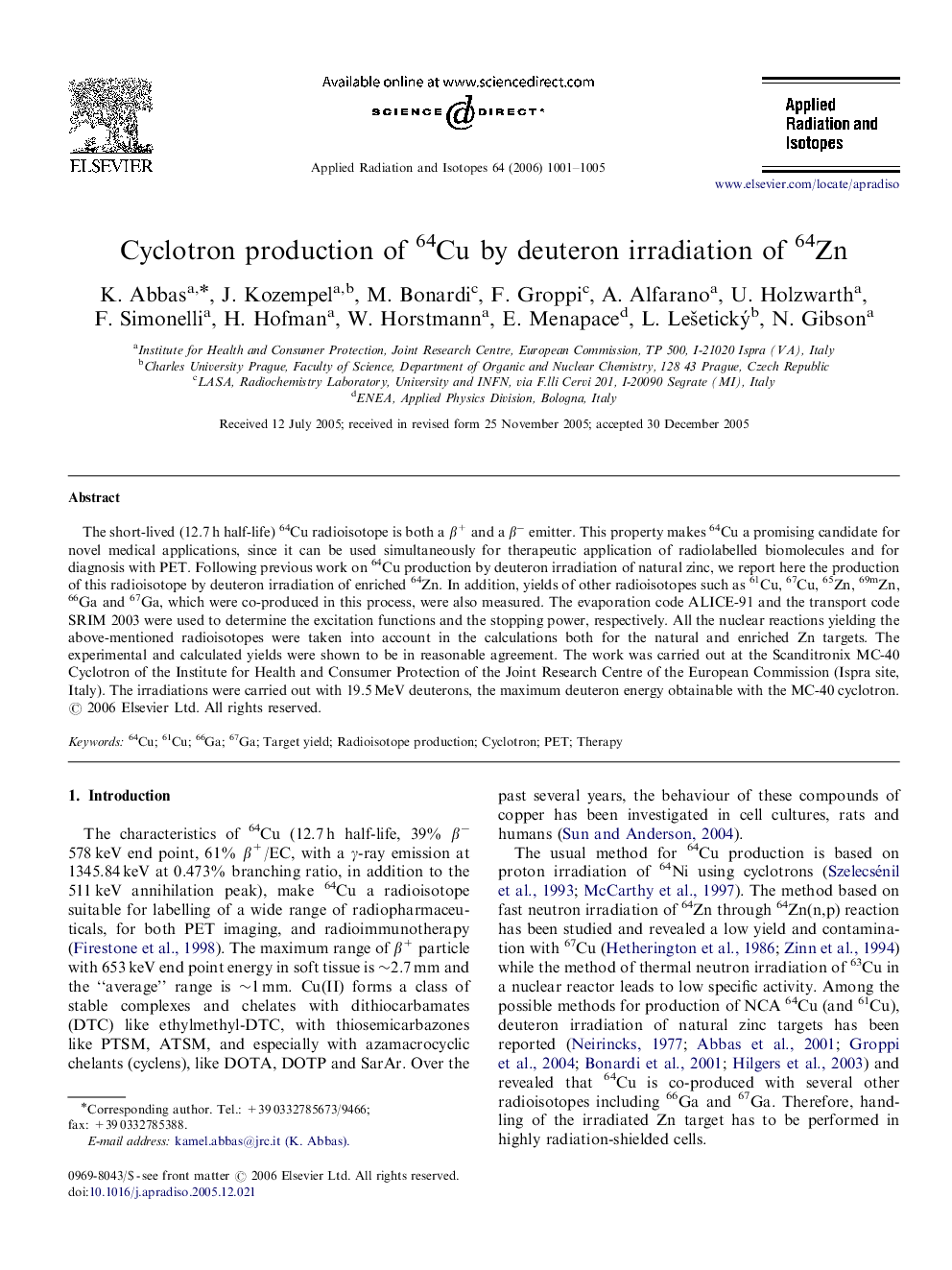| Article ID | Journal | Published Year | Pages | File Type |
|---|---|---|---|---|
| 1879925 | Applied Radiation and Isotopes | 2006 | 5 Pages |
The short-lived (12.7 h half-life) 64Cu radioisotope is both a β+ and a β− emitter. This property makes 64Cu a promising candidate for novel medical applications, since it can be used simultaneously for therapeutic application of radiolabelled biomolecules and for diagnosis with PET. Following previous work on 64Cu production by deuteron irradiation of natural zinc, we report here the production of this radioisotope by deuteron irradiation of enriched 64Zn. In addition, yields of other radioisotopes such as 61Cu, 67Cu, 65Zn, 69mZn, 66Ga and 67Ga, which were co-produced in this process, were also measured. The evaporation code ALICE-91 and the transport code SRIM 2003 were used to determine the excitation functions and the stopping power, respectively. All the nuclear reactions yielding the above-mentioned radioisotopes were taken into account in the calculations both for the natural and enriched Zn targets. The experimental and calculated yields were shown to be in reasonable agreement. The work was carried out at the Scanditronix MC-40 Cyclotron of the Institute for Health and Consumer Protection of the Joint Research Centre of the European Commission (Ispra site, Italy). The irradiations were carried out with 19.5 MeV deuterons, the maximum deuteron energy obtainable with the MC-40 cyclotron.
